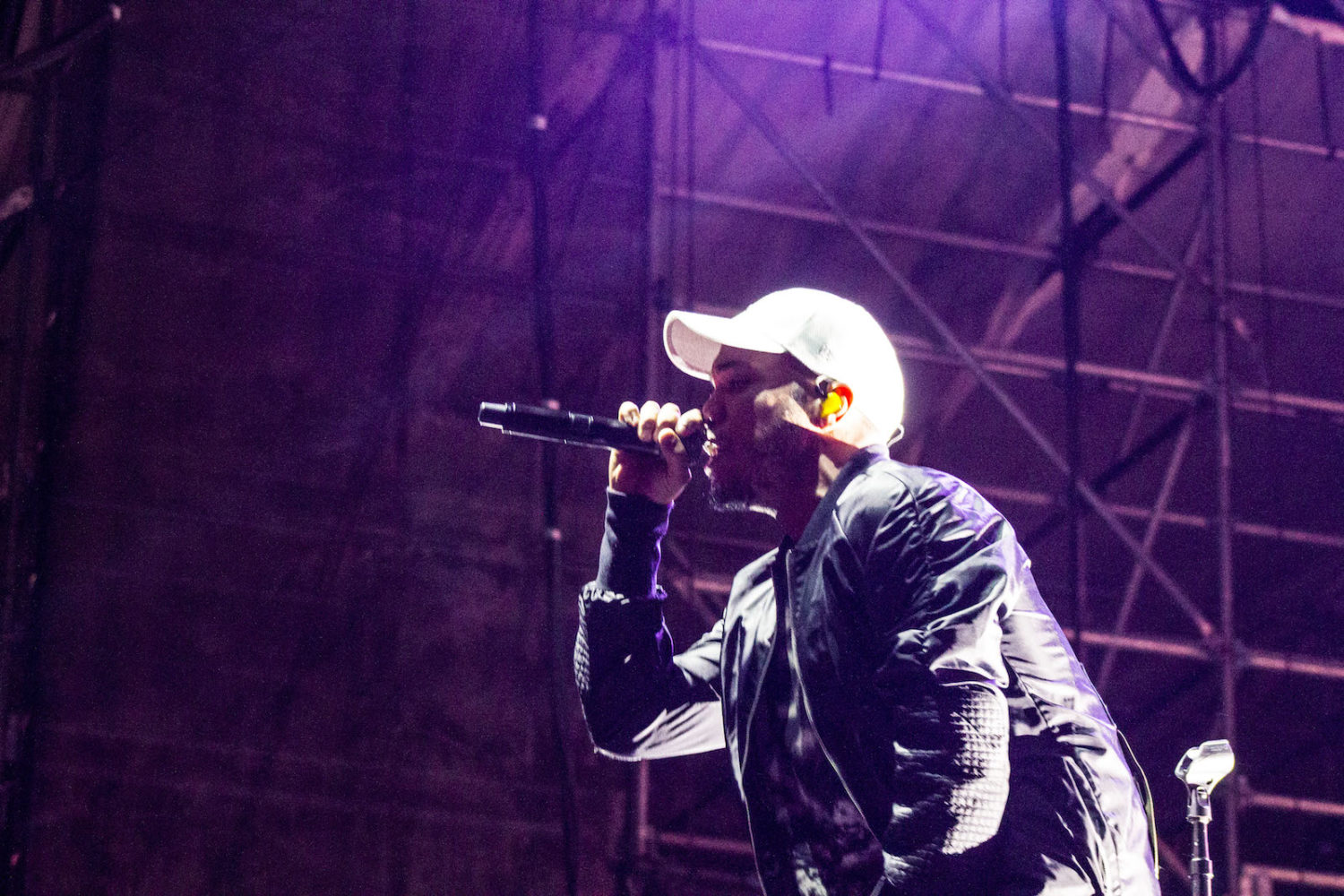The future of music is unpredictable, but at the same time it’s all around us in the present. Within the realm of urban music right now we’re able to uncover elements of jazz, funk, dancehall, house, old-school rap, soul and sounds yet to be categorized. This truth appropriately set the stage for this year’s Manifesto Festival of Community & Culture’s headlining event at Toronto’s TD Echo Beach. The evening, illuminated by the twinkling lights of the city’s skyline and a breathtaking sunset, bore witness to the colourful sounds of artists such as Toronto’s Daniel Caesar, Montreal producer Kaytranada and Oxnard, California’s multi-faceted Anderson .Paak.
As the festival celebrated its 10-year anniversary, organizers found themselves asking one fundamental question: where is music going at this point?
“We still have our trap lovers and our old-school lovers,” says Manifesto’s summit coordinator, Erin Lowers. “But I think hip-hop is such a multi-dimensional platform at this point that we’re able to pull from every other genre and create our own sound.”
Each artist adopts various components of music unrestricted by decade or genre to create a timeless sound that’s all their own.
Artists like Caesar, Kaytranada and .Paak encompass that exceptional ability. Caesar seems to be the very picture of serenity, as he emerges on stage cool and collected just as the day’s oscillating rain showers disperse and a rainbow is seen faintly overhead. His songs are laced with melancholic piano keys and guitar strums that decorate soul-touching, honest lyrics. Similarly, Anderson .Paak — who closes the show under a minimally star-lit sky — also manipulates the use of instruments. He uses the drums and the saxophone to create his own distinctive rhythms reminiscent of eras long past, but anchored in the present by his vibrant storytelling capacity. .Paak’s artistry earned him an honourable nod from hip-hop mogul Dr. Dre who signed the musician to his Aftermath Entertainment label earlier this year. Kaytranada, whose set is sandwiched in the middle, cooks up a melting pot of everything that can only be described as a hip-hop-funk-soul-houstastical (yes, I made that word up) dance party. Earlier this fall, the DJ/producer even nabbed a Polaris Music Prize for his 2016 debut album 99.9%. Each artist adopts various components of music unrestricted by decade or genre to create a timeless sound that’s all their own.
Adria Kain, a multi-faceted Toronto artist, who also performed as a part of this year’s Manifesto festival, says that the 2016 line-up selection is a stimulus for generations of music to come.
“A lot of the artists that were on the bill this year represent real musicality,” says Kain. “I feel like it’s starting to click that this is what we should be promoting and bringing out. For me, at least, that’s what it feels like. It was humbling to see. It gave me, as an artist, inspiration.”

Thanks to the wondrous capabilities of technology, gaining access to new music today is almost as easy as breathing, for both artists and fans. Before the digital age of Spotify and SoundCloud, however, radio and television networks like Music Television (MTV) were heavily relied on for the latest in popular music. Shows on these outlets would often strictly showcase one genre of music depending on the intended demographic, so chances are that if you listened to heavy metal, heavy metal was all you knew. Although in 1986 when rap group Run DMC covered Aerosmith’s legendary rock single “Walk This Way” for its third studio album Raising Hell, history had been made. The seemingly unfathomable merger between rap and rock helped pave the way for hip-hop to emerge into the mainstream. In the years following, collaborations like Anthrax and Public Enemy’s “Bring the Noise” or Jay Z and Linkin Park’s “Numb/Encore” would aid in blurring the lines between genres and shift the way we see music.
Taking the last 10 years, and the next decade into consideration, Manifesto’s team of creatives orchestrated a sequence of events that were inclusive of a multitude of music streams. The festival’s launch day saw Toronto DJ/producer Boi-1da play a full trap set at Mascot Brewery, while its closing block party at Yonge-Dundas Square featured performances from artists like Kardinal Offishall and DJ Starting From Scratch, who’ve both been prominent figures in the city’s music scene since the ’90s.
“We’re in a time where we’re not all going to the club to turn up and we kind of just want to be a little low-key and enjoy life.”
“There’s space for everything,” says Lowers. “I think we’re in a time where we’re not all going to the club to turn up and we kind of just want to be a little low-key and enjoy life, but there’s room for everything at the end of the day.”
Regardless of what gaps exist between communities or generations of music, artists are becoming more and more carefree in producing sounds that could potentially appeal to a wide range of listeners. It’s likely that fans of Anderson .Paak quickly became Daniel Caesar admirers and Kaytranada stans left with a whole new archive of music to look-up and add to their favourite playlists. It has come to a point where, when a person is faced with the question, ‘what kind of music do you listen to?’ instead of simply responding with rock or rap, the only conceivable answer is ’good, I listen to good music,’ because really that’s the only answer that matters.
Photos © Anthony Ameyaw & Urbanology Magazine




Comments are closed.